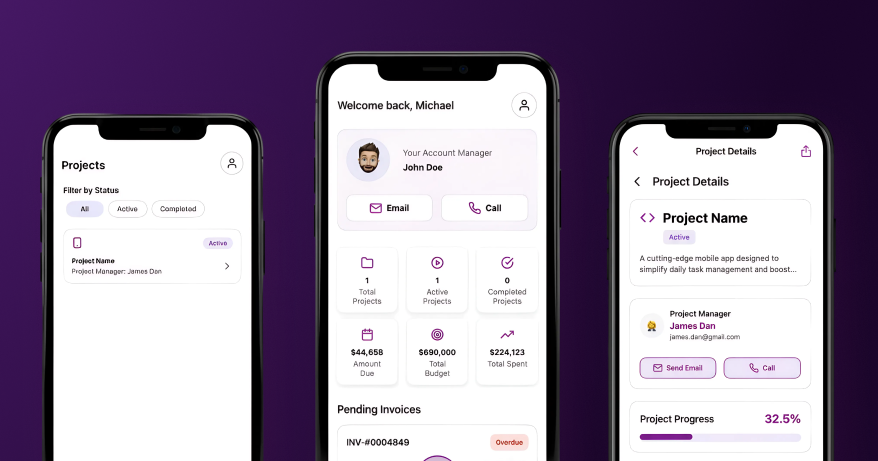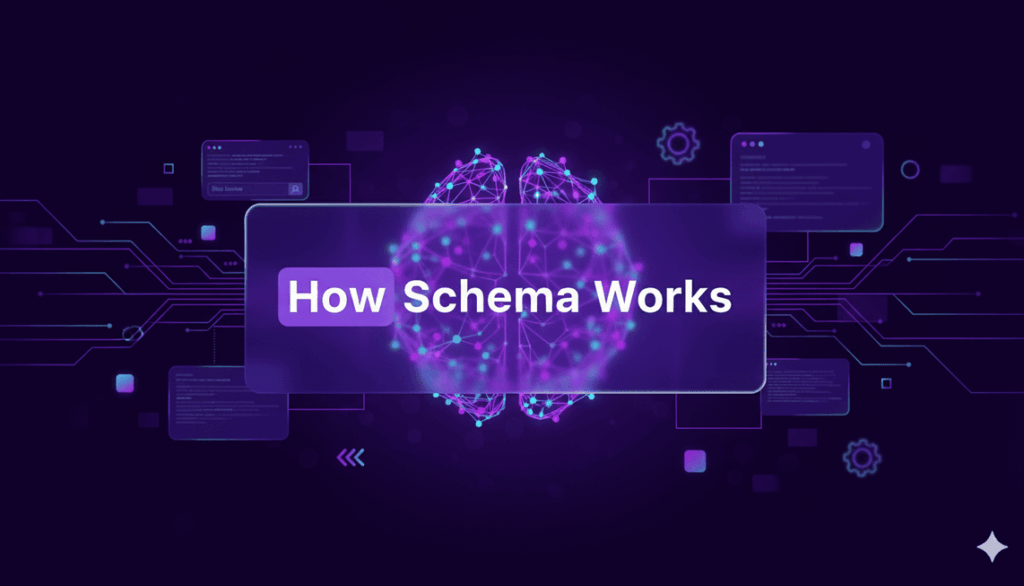A Strategic Roadmap for Success
In 2025, artificial intelligence (AI) has transformed from an experimental novelty to a foundational business capability. Medium to large enterprises are no longer asking if they should implement AI, they’re asking how to do it strategically and at scale. Despite widespread adoption, the gap between AI ambition and successful execution remains substantial. While over 80% of enterprises have initiated AI projects, only 30% report realizing expected outcomes (McKinsey, 2023).
This guide outlines a strategic roadmap for enterprise AI implementation, helping organizations navigate complexity, optimize ROI, and build sustainable AI capabilities that deliver long-term value.
The Evolving Enterprise AI Landscape
Enterprise AI has matured across five dimensions:
- General-Purpose AI Systems: Modern AI tackles broader tasks beyond narrow use cases like chatbots and recommendation engines, impacting entire departments and even influencing corporate strategy.
- Reasoning and Explainability: AI can now provide context-aware decisions and human-like reasoning, which is essential for transparency and compliance-heavy sectors such as finance, healthcare, and insurance.
- Multimodal Processing: Enterprises benefit from AI that understands text, images, audio, and structured data simultaneously. This is ideal for dynamic operations like customer support, logistics optimization, and complex manufacturing scenarios.
- Autonomous Systems: Agentic AI performs tasks independently, such as optimizing delivery routes, managing inventory autonomously, or executing real-time financial trades based on predictive analytics.
- Industry-Specific Applications: Verticalized AI in healthcare, finance, and retail integrates domain-specific knowledge for faster, safer implementation and more tailored outcomes.
AI is no longer a single-solution tool but an adaptable framework capable of transforming entire operational models.
Foundations for Successful Implementation
Enterprises that succeed with AI build strong foundations in:
- Data Infrastructure: High-quality, governed data is non-negotiable. Companies must invest in real-time pipelines, centralized storage, regulatory compliance, and metadata management. Technologies like data lakes and lakehouses are essential enablers.
- Compute Resources: Right-size hardware and cloud infrastructure based on workload (training vs. inference). Use optimization techniques like model quantization, pruning, and leveraging GPU/TPU acceleration. Multicloud and hybrid infrastructure strategies are increasingly popular to ensure flexibility and cost-efficiency.
- Talent Strategy: Cross-functional teams; data scientists, domain experts, software engineers, DevOps, and analysts—must collaborate efficiently. Consider centers of excellence to scale expertise and unify AI strategy across departments. Upskilling programs are key to closing the AI talent gap internally.
- Governance and Ethics: Embed bias detection, explainability, and fairness from day one. Use frameworks aligned with OECD AI Principles and comply with standards like ISO/IEC 42001. Ethics boards, algorithmic audits, and responsible AI dashboards are becoming the norm.
- Systems Integration: Legacy systems need modern interfaces (APIs, microservices) to enable AI plug-ins without disrupting workflows. Adopt an API-first, event-driven architecture to reduce friction between legacy and AI-native modules.
- Security and Compliance: Implement monitoring for adversarial inputs, ensure encrypted data storage, role-based access controls, and stay compliant with GDPR, HIPAA, CCPA, and other relevant laws. Use threat modeling and pen-testing specifically tailored to AI environments.
The 5-Phase AI Implementation Roadmap
- Strategy & Assessment: Align AI initiatives with business goals. Start by identifying high-impact use cases and assessing data readiness. Conduct an AI maturity assessment and engage both technical and executive stakeholders. Tools like the AI Canvas or Forrester’s AI Readiness Framework can guide this process.
- Data & Infrastructure Setup: Build pipelines and prepare development environments. Prioritize data accessibility, quality, and regulatory alignment. Leverage cloud platforms like AWS, Azure, or Google Cloud AI for scalable infrastructure. Include sandboxes for experimentation and model version control.
- Pilot Projects: Choose use cases with fast, visible ROI. A/B test performance and build internal trust. Examples include fraud detection, customer churn modeling, and inventory forecasting. Focus on measurable KPIs such as time saved, cost reduced, or accuracy improved.
- Scale Across Business Units: Use pilot insights to scale across teams. Embed AI in operational processes and train users to improve adoption. Consider establishing an enterprise AI playbook and a change management framework to ensure cross-departmental cohesion.
- Continuous Monitoring & Improvement: Track performance (technical and business). Use feedback loops and retraining cycles to adapt to evolving conditions. Model monitoring tools like Fiddler, Arize, and WhyLabs are helpful for drift detection and performance tracking.
We cover this framework in more detail, with implementation checklists, ROI calculations, and stakeholder alignment templates in our AI Implementation Guide for Medium to Large Enterprises, releasing soon. It’s an essential toolkit for enterprise tech leads, product managers, and innovation executives.
Measuring ROI and Impact
Effective AI leaders link technical success to business outcomes:
- Operational Efficiency: Monitor pre- and post-AI productivity, cost savings, and process times. For instance, RPA-powered systems might reduce invoice processing from days to minutes.
- Customer Experience: Use NPS, first contact resolution, and retention metrics. Sentiment analysis and emotion recognition can help personalize support in real-time.
- Revenue Growth: Track new product success, pricing optimization, and sales uplift. AI-enabled dynamic pricing, next-best-offer engines, and hyper-personalized marketing can drive significant topline growth.
- Risk Mitigation: Measure improvements in fraud detection, risk scoring, and compliance adherence. Use anomaly detection, credit scoring models, and KYC automation to streamline processes.
Use an AI ROI framework to clearly communicate benefits to executives and secure future investment.
Common Pitfalls to Avoid
- Unrealistic Expectations: Set clear scopes and educate stakeholders about current AI limits. Create a culture of experimentation over perfection.
- Data Quality Issues: Prioritize governance, avoid biased or incomplete datasets. Invest in automated data cleaning and lineage tools.
- Change Management Gaps: Engage users early and train extensively to ensure adoption. Use design thinking and human-centered AI design to enhance user acceptance.
- Isolated Teams: Avoid silos by fostering cross-functional collaboration. Use cross-department AI councils and regular alignment sprints.
- Security Oversights: Regularly audit AI systems for vulnerabilities and compliance risks. Implement model explainability and access logs to prevent misuse.
Future-Proofing Your AI Strategy
- Modular Architectures: Build AI solutions with interchangeable components to adapt to new models and frameworks easily. This includes containerization and use of frameworks like MLflow and Kubeflow.
- Continuous Learning: Monitor model drift, automate retraining, and implement real-time feedback loops. Use active learning where models query users for hard examples to improve themselves.
- Ethical Development: Use tools like IBM’s AI Fairness 360 and Google’s What-If Tool to embed fairness and transparency. Establish internal review boards for sensitive use cases.
- Regulatory Readiness: Stay ahead of changing laws by documenting AI pipelines and participating in compliance readiness assessments. Contribute to open policy forums to stay informed on upcoming mandates.
Success Stories Across Industries
- Manufacturing: Predictive maintenance cut downtime by 35% and improved uptime through real-time sensor analysis. A leading automotive firm implemented condition monitoring AI, saving $12M annually.
- Financial Services: AI-enhanced credit scoring boosted prediction accuracy by 25% while improving compliance explainability. A Tier-1 bank reduced manual review time by 60% through intelligent document processing.
- Healthcare: Radiology assistance systems cut diagnostic errors by 14% and improved throughput by 30%. One network used AI to triage cases, cutting emergency readmissions by 20%.
- Retail: Demand forecasting systems using multimodal AI improved margins by 2.3 percentage points by reducing overstock and understock incidents. A fashion retailer matched local demand to seasonal inventory using AI-powered insights.
Each case involved tight collaboration between technical and domain experts, agile pilots, strong change management, and embedded governance.
Conclusion
Enterprise AI in 2025 is not just about technology, it’s about strategy, structure, and culture. The winners are not necessarily those with the most advanced models but those with the clearest business alignment and strongest operational execution.
Organizations must look beyond hype and focus on building scalable, secure, and ethically aligned AI ecosystems that deliver long-term value. Investing in foundational elements; data, governance, talent, and integration, while adopting a phased, value-driven implementation roadmap is key to success.
Ready to transform your AI vision into measurable results? Start by downloading our free AI Implementation Guide for Medium to Large Enterprises or schedule an assessment call with our enterprise AI experts at 247labs.com.
Let’s build your future-ready enterprise, together.





